#artist is balthasar van der ast
Text

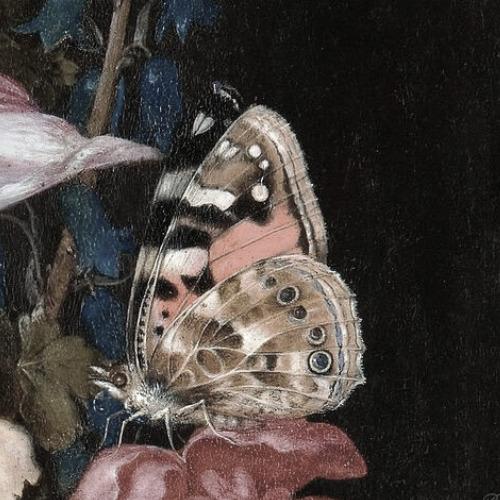


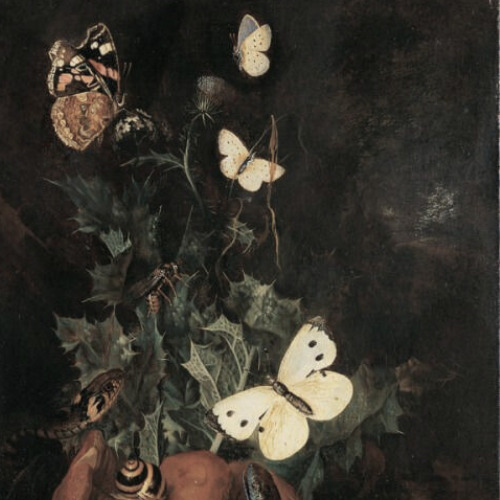
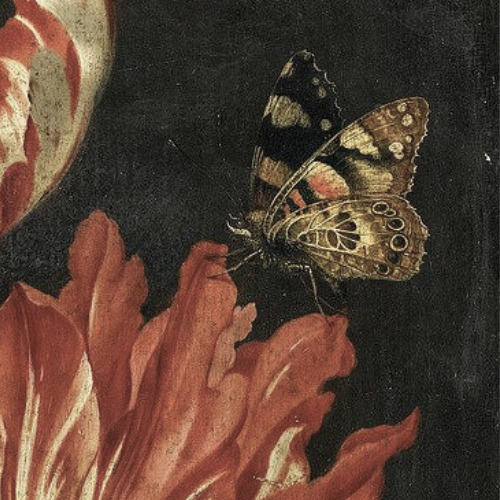
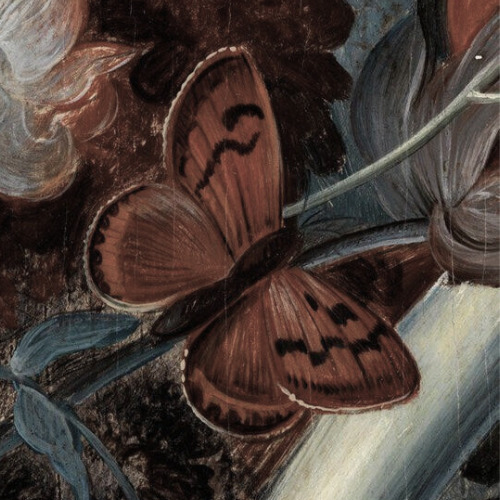

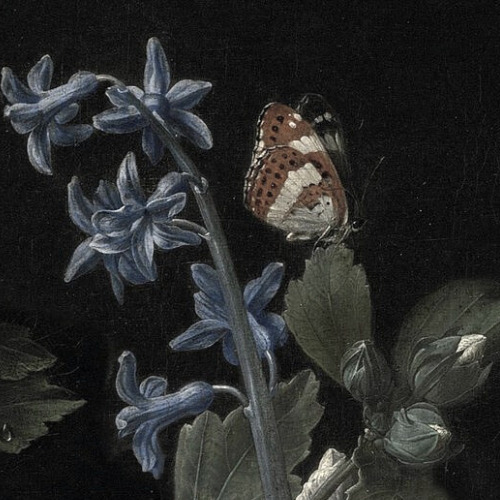
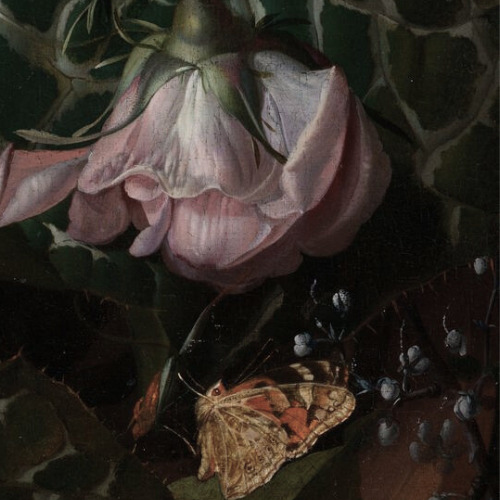
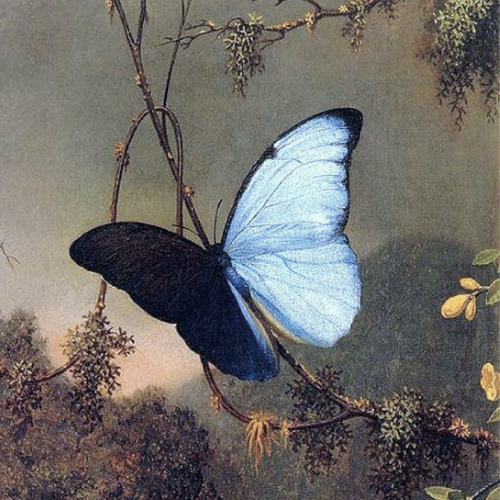

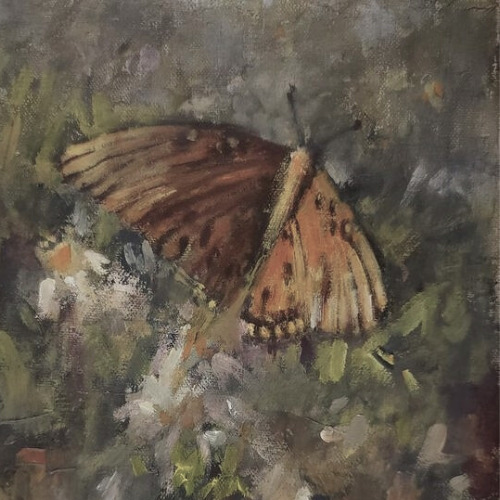

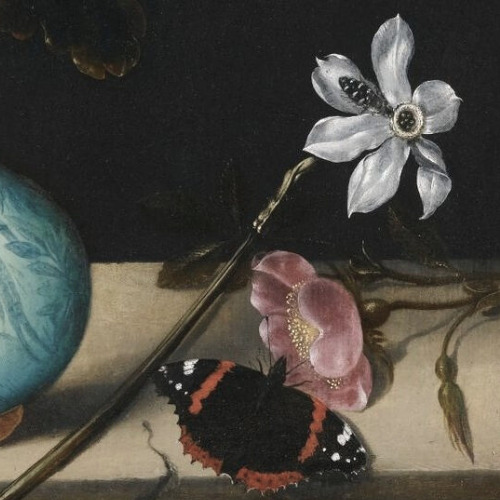

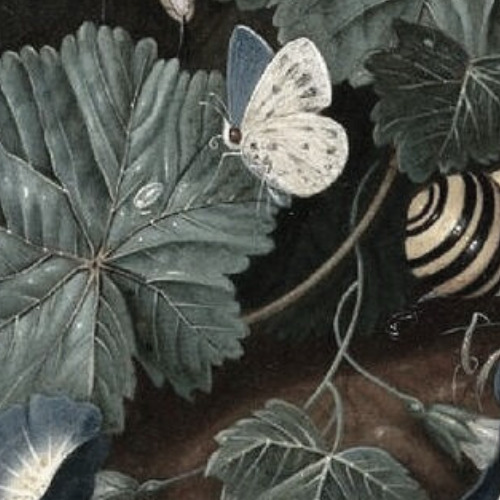
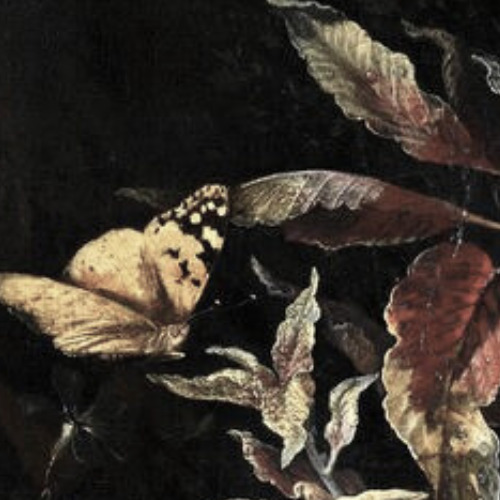
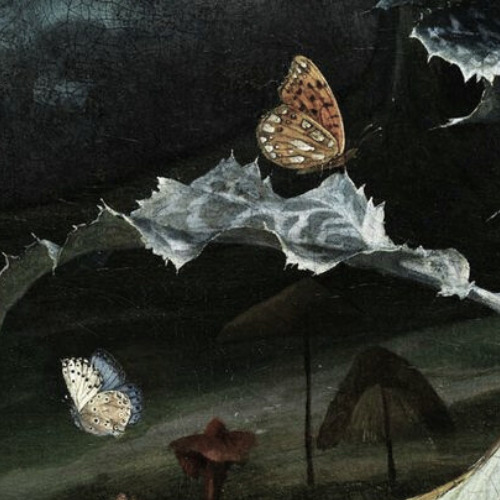

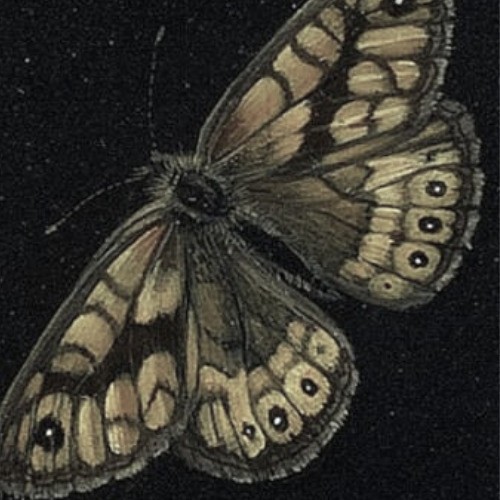
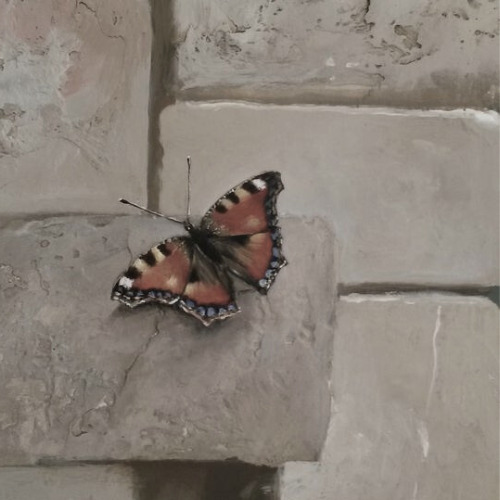
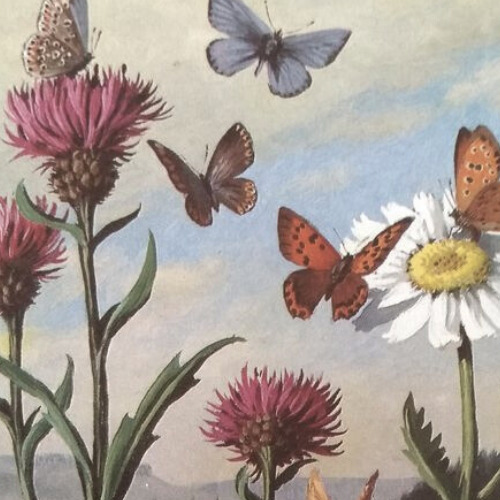
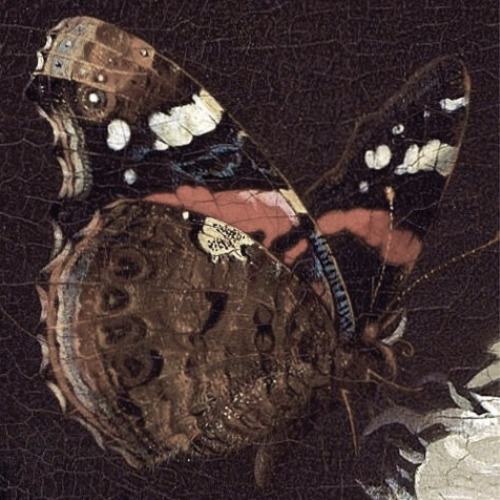
insects in art: butterflies
#artist is harold h. piffard#artist is ambrosius bosschaert the elder#artist is elias van den broeck#artist is melchior d'hondecoeter#artist is carl wilhelm de hamilton#artist is balthasar van der ast#cant find artist#artist is edward george handel lucas#artist is nicolaes van veerendael#-cant find artist#artist is martin johnson heade#---cant find artist#artist is mary hubley#artist is jan van huysum#-artist is ambrosius bosschaert the elder#artist is adrian coorte#-artist is karl wilhelm de hamilton#artist is otto marseus van schrieck#artist is otto marseus van schrieck-#artist is elias van den broeck-#artist is giovanna garzoni#---cant find artist--#artist is john leigh-pemberton#artist is jan davidsz de heem#art#art history#butterflies#artedit#arthistoryedit#*mine*
4K notes
·
View notes
Text

Balthasar van der Ast
Vase with a single Tulip
1625
#Balthasar van der Ast#dutch artist#dutch art#dutch painting#dutch painter#tulips#tulipmania#flowers#flower art#flowers in art#flower painting#beautiful flowers#floral painting#floral art#floral#art history#aesthetictumblr#tumblraesthetic#tumblrpic#tumblrpictures#tumblr art#aesthetic#beauty#tumblrstyle
81 notes
·
View notes
Text

Balthasar van der Ast (1593/1594–1657) • Still Life with Shells • c. 1640 • Museum Boijmans Van Beuningen, Rotterdam, Netherlands
#still life#art#painting#fine art#balthasar van der ast#dutch artist#dutch golden age#17th century european art#dutch master#baroque still life#baroque art#art history#oil painting#art of the still life blog#art blogs on tumblr#art lovers on tumblr
43 notes
·
View notes
Text

▪︎ Floral Still Life with Shells
Artist: Balthasar van der Ast (Netherlandish, 1593/4–1657)
Date: 1622
Place of origin: Netherlands
Medium: Oil on copper
#17th century#art#history#history of art#decorative arts#17th century art#oil painting#still life#floral#flowers#shell#netherlands#1622
106 notes
·
View notes
Text
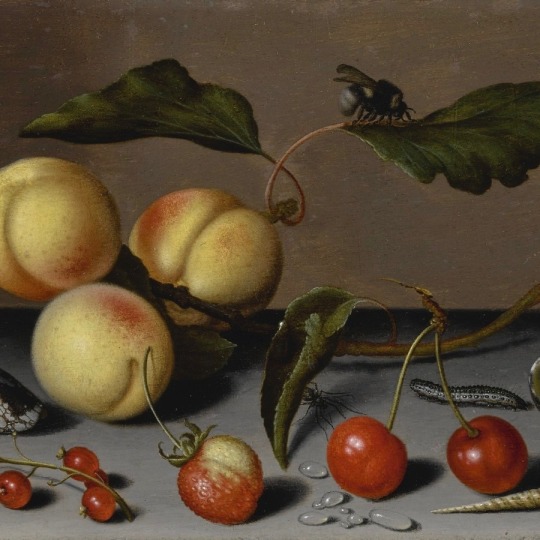
Balthasar van der Ast "A Still life with Apricots, Cherries, a wild Strawberry, Red Currants, Shells and Insects" (detail)
90 notes
·
View notes
Photo
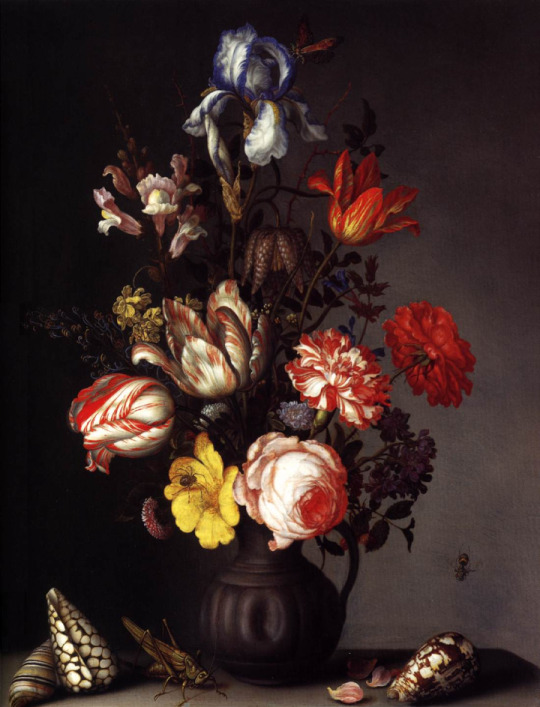
Balthasar van der Ast (1594-1657) "Flowers in a Vase with Shells and Insects" (c. 1630) Oil on panel Dutch Golden Age Located in the National Gallery, London, England
#paintings#art#artwork#still life painting#colorful#balthasar van der ast#oil on wood panel#fine art#dutch golden age#national gallery#museum#london england#dutch artist#red flower#seashells#insect#bugs#orange#yellow#blue#white#spider#grasshopper#1630s#early 1600s#early 17th century
228 notes
·
View notes
Photo
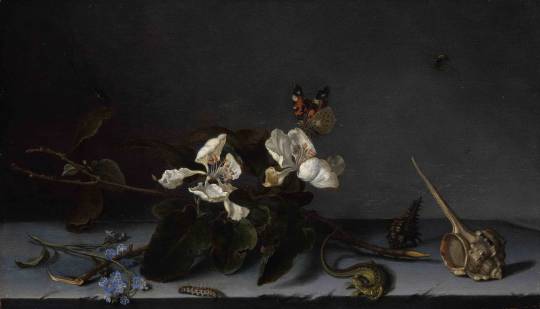
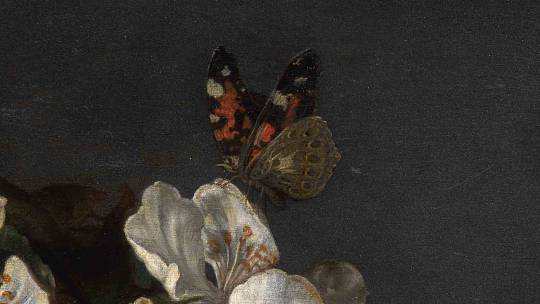

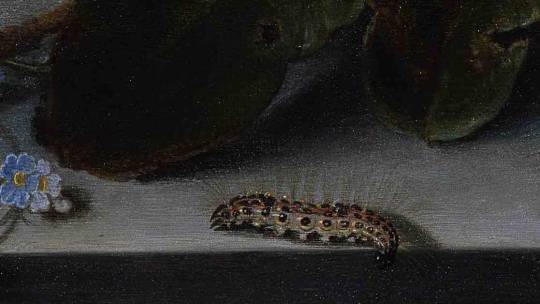
・Apple blossoms, with some shells and insects, by Balthasar van der Ast, 1635・
#Art#balthasar van der ast#detail#dark academia#aesthetic#painting#classic#artist#century#17th century#Still life#history
7 notes
·
View notes
Photo
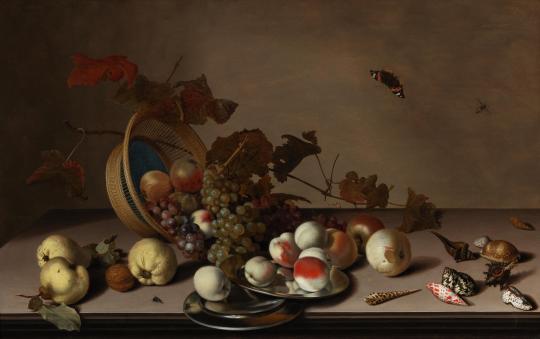
A Fruit Still Life with a Wicker Basket, Shells, and a Butterfly
Balthasar van der Ast (Dutch; 1593/94–1657)
Oil on panel
Dorotheum, Vienna
#Balthasar van der Ast#van der Ast#Ast#Dutch painters#Dutch art#Dutch artists#still lifes#Dutch still lifes#wicker#wicker baskets#baskets#fruit#shells#butterfly#butterflies#Dutch Baroque#grapes#apples#cherries#peaches#chiaroscuro#17th century#17th-century Dutch art#Netherlandish art#Netherlandish still lifes#pewter#pewter plates#peach#Baroque art
22 notes
·
View notes
Text
Inspired by Art Still Life - Evaluation (07/12/20)
1. This section of Inspired by Art was about still life. I really enjoyed it actually and it helped me realise how hard still life (painted and photographed) is, and how strong the creative visions of those originally practicing it must have been, especially the artists.
2. I enjoyed taking the photos the most - trying to align my eyes with what the original artist/photographer saw.
3. This project taught me a lot about composition, framing, lighting. How useful the rule of thirds overlay is when using a camera, how much focal length can affect framing, and how much the angle of light can transform an image.
4. I would like to develop my awareness and usage of aperture’s affect on depth of field further, to get the best images.
5. Photographers I researched throughout this project: Balthasar van der Ast (artist), Pieter Claesz (artist), Joel Meyerowitz (photographer), Irving Penn (photographer), Sharon Core (photographer).
6. Photographers like Irving Penn influenced me a lot with their skill for composition and perfectionism. Sharon Core’s work is beautiful.
7. The technique I enjoyed the most was composing a still life.
8. The most successful part of my project is the replica shot I did of Irving Penn’s ‘After Dinner Games, New York, 1947′. It just looks the best - based on colour, exposure, arrangement, lighting.
9. I did encounter problems in this project. For one thing I didn’t have any liquor glasses small enough to balance a domino on top of so I had to fill the glass in my Penn recreation with dominoes. That bothered me a lot because I had identical brown liquor that I could’ve used and it also changed the colour balance of the image. Furthermore, the cards in the original were green, and I only had blue or red. I perhaps could have added another small blue item to the image to disperse the blue more evenly. I used another cup prior to the gold one in the final image but it was too big for the composition.
10. I learned that my table is a good background for still life images in itself. I also learned to raise my camera and angle it down to limit unwanted background distractions when trying to focus on a particular subject or scene.
11. Habits of the mind I used throughout this project include thinking flexibly, persisting, and striving for accuracy.
12. What I would do differently next time... follow the input to output criteria more effectively.
13. Interestingly, for my final image replica of Penn’s shot, it looks quite different between my phone and laptop. On my phone it looks more yellow so I would say I’d change the colour temp. On the laptop it looks perfectly white so I wouldn’t alter the colour temp. It does however on both devices look like it could use a higher exposure. For the image that takes inspiration from Sharon Core’s ‘Early American, peaches, 2009′ I would simply try to get peaches.
14. If I was asked to do a project using the techniques featured in this project again I would make sure I didn’t think impulsively and end up having to reshoot the task.
1 note
·
View note
Photo
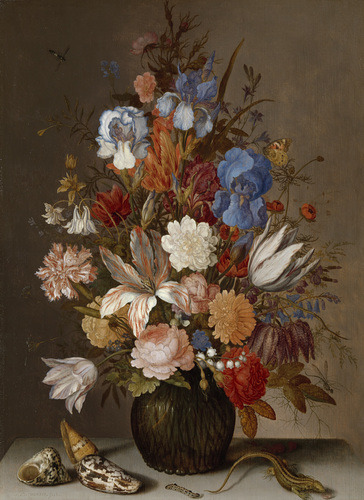
Still Life with Flowers by Balthasar van der Ast, Museum of the Netherlands
A magnificent bouquet of tulips, roses, iris, columbine and gillyflowers is set in a ribbed glass vase. The artist first made a detailed drawing on the prepared panel before beginning to paint. In the intervening centuries, some of the pigments, primarily the lighter colours, have become transparent, allowing the underdrawing to show through.
18 notes
·
View notes
Note
hi! do you have any like baroque floral paintings perfect for dash headers?
Hi ! Here’s some artists/paintings & headers for u ✨
Rachel Ruysch — x x xWillem van Aelst — x x x xJan van Huysum — x x xBalthasar van der Ast — x x Cornelis van Spaendonck — x x x
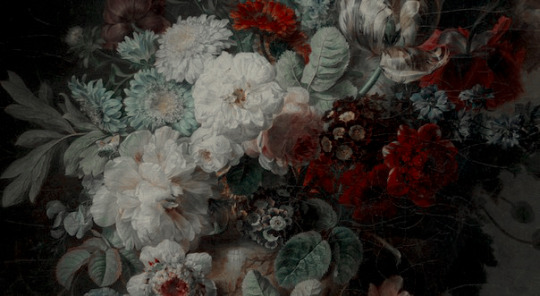


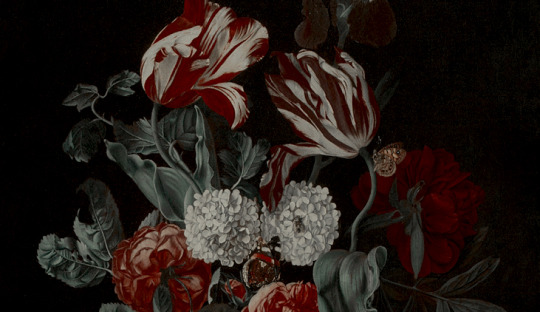


65 notes
·
View notes
Photo
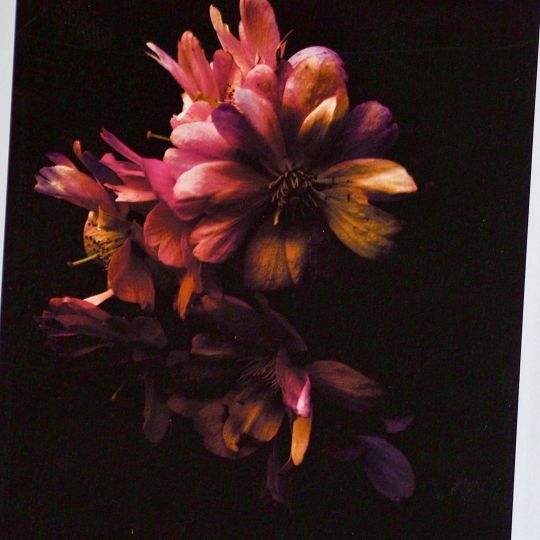
- - I so enjoy artists like Balthasar van der Ast and his amazing flower arrangements, paintings of seashells, insects. This photograph is a modest tribute to him and those artists whose succulent and tempting arrangements happily adorned the homes of the well off, in the Baroque and Dutch Golden Age era. Prunus cerrulata Balthasar
Skr. 175,00 € / 1850 Skr Width: 14.5 x 20 cm Signed edition: 25 ex. Print: Hahnemühle fine-art 300 gr. watercolour paper. - hb ©2020. . . . . . #artistsupportpledge #olympussverige #olympus #buyartonline #photooftheday #photography #photoart #artphotography #fineartphotography #prunuscerrulata #cherryblossom #balthasarvanderast #flowers #cherryblossoms #moments #stilleben #stilllifephotography #stilllife #artistsupportpledgesweden #olympusomdem5 #olympusomd #design #homestyling #homeinterior #interiordesign #artwork #artsy #kirsche #cerise #körsbärsblommor (på/i Stockholm, Sweden) https://www.instagram.com/p/CFaZY48pmkD/?igshid=1rco78gzg7dg6
#artistsupportpledge#olympussverige#olympus#buyartonline#photooftheday#photography#photoart#artphotography#fineartphotography#prunuscerrulata#cherryblossom#balthasarvanderast#flowers#cherryblossoms#moments#stilleben#stilllifephotography#stilllife#artistsupportpledgesweden#olympusomdem5#olympusomd#design#homestyling#homeinterior#interiordesign#artwork#artsy#kirsche#cerise#körsbärsblommor
0 notes
Text

Balthasar van der Ast
Still Life with Shells
circa 1640
#Balthasar van der Ast#dutch artist#dutch painter#dutch art#dutch painting#sea shells#butterfly#butterflies#insects#nature art#nature#wildlife#wildlife art#animals in art#animals#art history#aesthetictumblr#tumblraesthetic#tumblrpic#tumblrpictures#tumblr art#aesthetic#beauty
38 notes
·
View notes
Photo

Seduced by Art: Photography Past and Present - Book by Hope Kingsley .
I found this book PDF online that study’s the nature of art involved in photography - Past and Present. 'Seduced by Art' takes a provocative look at how photographers use fine art traditions, including Old Master painting, to explore and justify the possibilities of their art. Right from the beginning, photography dared to claim traditional ‘high art’ subjects as its own. Far from being a general survey, the exhibition draws attention to one particular and rich strand of photography’s history, in major early works by the greatest British and French practitioners alongside photographs by an international array of contemporary artists. It delves into the beauty involved around time and how the change of appearance that be what we have made of it. I have picked out the key points I took from reading this and referencing them to what I have learned from the art shown -
Pioneering Photographers -
Louis Daguerre
Daguerre’s invention did not spring to life fully grown, although in 1839 it may have seemed that way. In fact, Daguerre had been searching since the mid-1820s for a means to capture the fleeting images he saw in his camera obscura, a draftsman’s aid consisting of a wood box with a lens at one end that threw an image onto a frosted sheet of glass at the other. In 1829, he had formed a partnership with Nicéphore Niépce, who had been working on the same problem—how to make a permanent image using light and chemistry—and who had achieved primitive but real results as early as 1826. - With this section pointing out that Louis Daguerre introduced the first photographic purpose and stating that each dagueriotype was unique.
William Henry Fox Talbot
Some five years before Daguerre went public, the British inventor Fox Talbot was making good progress with his version of photography at Laycock Abby, Which I had the pleasure of visiting on last years trip that allowed me to broaden my concept of overall photographic boundaries. Talbot’s use of negative and positive become the basis for almost all 19th to 20th century photographs. Where as the daguerreotype died out 30 only years after it’s beginning. This section is a clear reminder of the learning of beginning and how both photographers pasted down their knowledge.
Expression & Memory: Portrait Photographs -
For centuries a painted or sculpted portrait was the only way to record a face, be it a king, a hero, a socialite or celebrity. The invention of photography in 1839 changed all this, giving many aspiring photographers the opportunity to earn a good living recording the middle class in formal studio portraits. The poet Elizabeth Barrett Browning, in common with many others, was entranced by the new photographic portraits. She preferred them to a fine art portrait ‘not in respect (or disrespect) of Art, but for Love’s sake’ she wrote, describing her feeling that the photograph was a closer description of the features of a loved one. The first time she saw a daguerreotype she described it as ‘like engravings – only exquisite and delicate beyond the work of a graver’. It is strange to reflect that prior to photography by far the majority would never have possessed an image of a loved one. A painted portrait was of course a hugely time consuming, and consequently expensive process – inevitably a privilege for the rich. The affordability of the daguerreotype made portraits available to a much wider group. The art critic P. G. Hamerton wrote in 1860: ‘A poor soldier’s wife can now get a more authentic miniature of her husband for one shilling, than a rich lady could have procured a century ago for a hundred pounds’.
This part explained the importance that can come from remembering old expression art and incorporating it into my own photography.
For example (Below):
Martin Parr - A sign of the times:
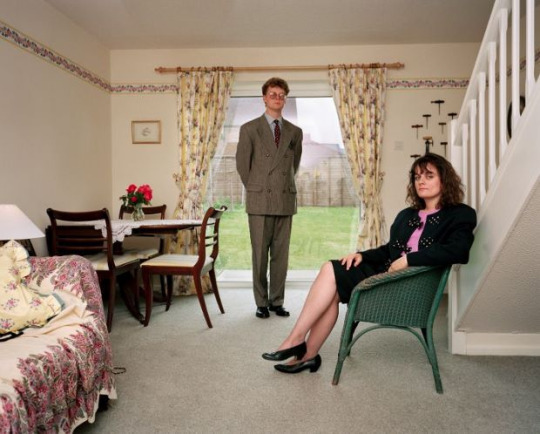
In relation to Mr and Mrs Andrews By Thomas Gainsborough:

STUDIES OF TIME AND BEAUTY: STILL LIFE PHOTOGRAPHY.
Although ostensibly still life is a collection of inanimate objects assembled to demonstrate an artist’s skill, throughout the history of art the still life has often been rich with meaning, containing symbols of war, religion, sex and death. Contemporary photographers continue to explore and reinvigorate the genre. Dutch 17th-century art is arguably the richest for still life. Artists such as Balthasar van der Ast specialised in the genre, concentrating their astonishing skills on the depiction of flowers and insects. Such works can provide a seductive illusion, celebrating the beauty and opulence of the natural world and appealing to all our senses: sight, touch, taste, smell and hearing. But flowers wilt and insects die. Likewise our lives are transient and ephemeral. These phases of life are a part of the vanitas tradition, where beauty is but a passing thing and death is always closing in. Vanitas means emptiness in Latin and expresses the transitory and meaningless nature of material existence.
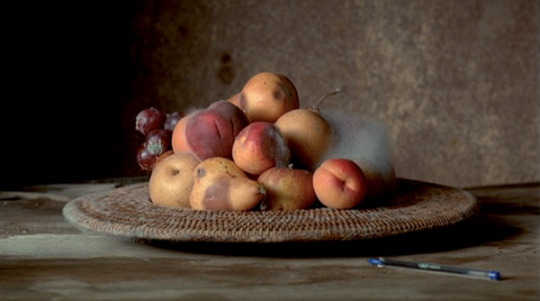
Sam Taylor wood - Still Life
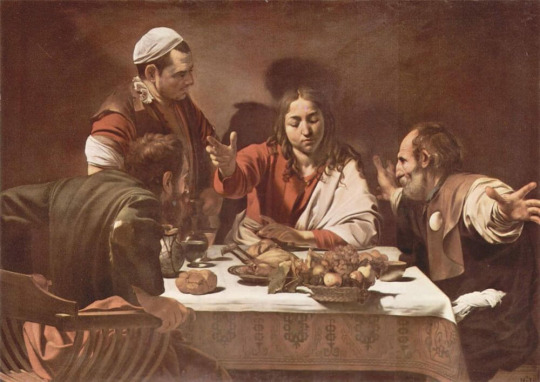
Supper at Emmaus (Caravaggio, Milan)
WILD POETRY
In 1868, the French critic Ernest Chesneau called landscape painting ‘a place of asylum, apart from the devouring activity, the continuous fever of the city’. In today’s fast- paced world, a contemporary photographer of landscape might agree. In Western art, landscape played an increasingly important role from the 16th century onwards. But it was not until after the industrial revolution, that the natural world became more revered and celebrated; the painting of landscape came to be seen as an important genre in its own right. Landscapes could be seen as a way of contemplating the beauty of the natural world, reflecting the spiritual in man’s nature. The rise in the importance of landscape painting coincided with the invention of the camera; from the outset photographers were wrestling with many of the same issues as the painters. Both paintings and photographs of landscape in the 19th century reflected a desire to escape the rigours of modern life and the increasingly industrial world.

Gustave Le Gray (1820–1884) The Great Wave, Sète
Although Gray captures transitory effects, his process was anything but instantaneous. The comparatively slow shutter speeds available to him at the time made it impossible to create this scene in one shot. Instead, he innovatively combined three: he added the clouds from a different negative and the immediate foreground from another.
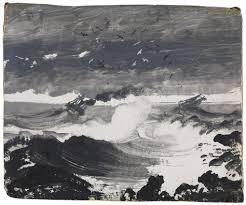
Peder Balke (1804–1887) The Tempest, about 1862
In this small painting, no larger than an envelope, Peder Balke captures the eye of a storm in his native Norway. He communicates nature at its most violent; two boats are in danger of being overwhelmed by the giant waves which have been painted at speed and with incredible freedom. The limited palette of white, grey and black tones is both arresting and reminiscent of a photographic plate.
TO CONCLUDE ON MY RESEARCH:
Through depictions of the then and now of some of the most historic and interesting paintings/photographs I have found that all art created in originated from an original in some form - whether it be on purpose or not we find our images relating to art in composition or lighting that link them together. The reason I read into this is because I wanted to get an understanding copying through the ages - which is essentially what I will be doing for my first shoot with comparing past to present in an editing process - this was indeed amplified when researching about Louis Daguerre and the process that lead him to create a following in his name. Another I found particularly interesting was the Martin Parr - Sign of the times image being similar to the Mr and Mrs Andrews By Thomas Gainsborough, it just shows me how much I can take away from this and think about the kind of narratives that can be performed through staging or through everyday. The Sam Taylor wood animation was extremely interesting as the photo acts as the reminder of whats to come. To conclude, I found this PDF exhilarating to look into and is a great help when understanding my main focus and possible methods as it resides with the times.
PDF LINK:
https://www.nationalgallery.org.uk/media/31355/notes_seduced-by-art.pdf
0 notes
Photo
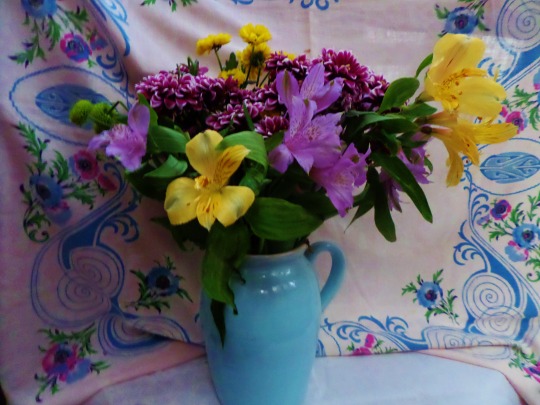
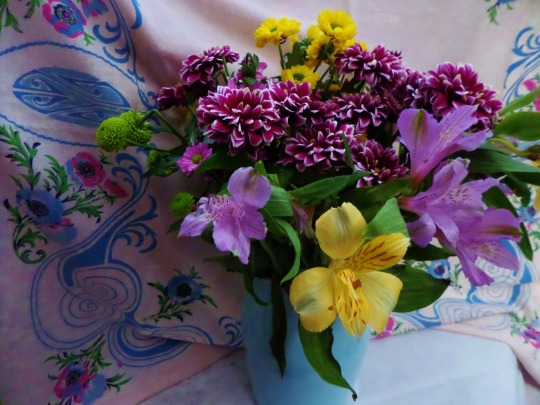
WINTER BOUQUET; A photographic STUDY in homage to the Artists of the Netherlands in the 17th century, such as Ambrosius Bosschart 1573-1621 & Balthasar van der Ast 1593-1657 on permanent display at The National Gallery, London, with their amazing photographic painting techniques.
0 notes
Text
Project 1- Composition (Research Point)
Nature Morte; or Still life, serves its purpose as one of the most prevalent genres in western art. – typically, paintings or drawings within the genre explore any inanimate object or being and can widely vary in media. Inclusion of all kinds of man-made or natural objects such as cut flowers, vegetables, meat, animals, wine and so on, often lend a hand in representing still life as a celebration of material pleasures. or often a warning of the ephemerality or short-lived perspective involved with these pleasures.
Throughout all art established in the seventeenth century, the ‘Still Life’ genre place bottom in the pecking order - fifth after history painting, portraiture, genre painting (scenes of everyday life) and landscape. Still-Life and landscape were considered lowly because they did not involve human subject matter.
In modern art, simple Still Life arrangements have often been used as a relatively neutral basis for formal experiments, for example by Paul Cézanne, the cubists and, later in the twentieth century, by Patrick Caulfield.
As a research point, I believe it is essential firstly, to study and look at the works of Balthasar van der Ast, as his work represents 17th century still life in all its grace and form. I will then move on to look at artists such as Antoine Vollon and Henri Matisse to compare the ‘Still Life’ And ‘Modernist’ movements and analyse the techniques used to interpret earlier works.

Antoine Vollon, Peaches, 1833-1900
Painted with Oil on a coarse board, Vollon’s ‘Peaches’ bears’ resemblance to that of something quite expressionistic, the dark brownish/yellow background set an earthy atmosphere, possibly relates to the natural origins of the peach, the background seems as though it could represent some sort of clay, further leading the viewers’ train of thought to that of a naturistic feel. The peaches themselves are composed in such a way that doesn’t make them “pop”, however, they represent themselves quite clearly against the darkened background; this being said, despite the image’s uncanny essence, it could be said that the peaches in the image look quite succulent and fresh, it could be conceivable that this portrays Vollon’s celebrity-like, ‘enjoyable’ personality shining through the realms of the monotonous still life at the time.
Vollon’s thick and cracked brush strokes on the board suggest that oil was used in the creation of ‘peaches’ it could be interesting to experiment with oil paints myself and see what comes of freshly painted oils, compared to that of something from the 19th century. I am also interested to experiment with the difficulty of using such light oil tones such as the peaches against quite a dark background; all the while pulling the work together with shadow and tone.
I now am interested in analysing the works of Balthasar Van der Ast and Henri Matisse, this will give me an insight of the style of work I enjoy working with the most within the Still Life Genre. It is possible that I will use either one or both of their work and incorporate my own ideas into experimentation.
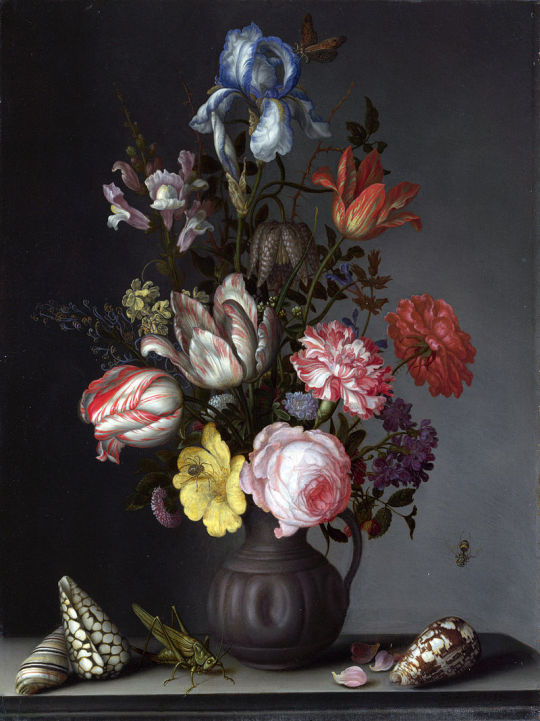
Balthasar Van Der Ast, Flowers in a Vase with Shells and Insects, 1628
Extracted from the early-mid 17th century, this piece painted with oil on to an oak canvas reflects the scientific explorations that the dutch were undertaking at the time; with art often coming hand in hand with science, images similar could be found throughout this era. With an unusual style, Van der Ast, rapidly became one of the most influential artists in 17th century Netherlands. His work boasts blossoming flowers bursting with colour, reflective of his life and personality. Insects and shells in his work follow the trend of new discoveries in the era and are painted so well that they are almost tangible.
This specific piece strikes me as quite an interesting piece; it consists of flowers such as roses and tulips, lilac and snake’s head lilies. All flowers which do not bloom at the same time; further suggesting that Van der Ast will have spent the year taking different sketches of the flowers, finally drawing them up into one piece- this to me speaks an air of passion and dedication, which can also be seen within his attention to detail looking at the insects and petals in the piece.
Coloured flowers generally seem to sit well on a darkened background, as the contrast between the two assists in giving the flowers more of a ‘burst’ of colour. A quote by an Amsterdam doctor perfectly summarises his work who states “In flowers, shells and lizards, beautiful”.
Personally, Van der Ast’s work stands out to me substantially as something that I would be interested in working with, due to the simple fact that if placed alongside other works from the same time period in the same genre, it needs no assistance in shining through.
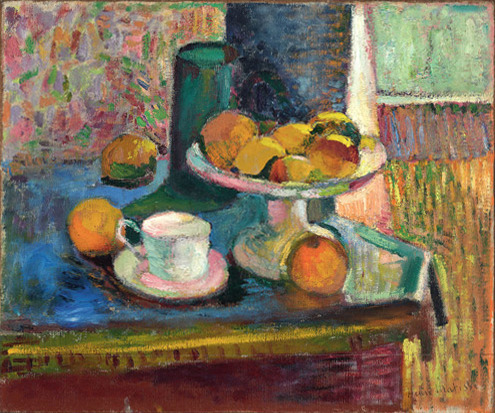
Henri Matisse, Still Life with Compote, Apples and Oranges, 1899
Crafted with traditional oil pastels on canvas, ‘Still Life with Compote, Apples and Oranges’ is recognised as one of Mattise’s more ‘complex’ pieces. The mark-making techniques used on the piece suggest quite an erratic mood during work; with colours in abundance and quite randomised. Created in 1899, the piece came a while before some of his finer works and is not really reflective of Matisse as an artist, however, it is a piece that could prove to be a good use for my work. Oil pastel strokes and thick coating are a style that I take interest in and would like to experiment within my pieces.
This piece is not my favourite of the three that I have chosen however it is promising in terms of the media used and how I could incorporate these. I plan to use the techniques and media from Matisse’s work and reflect these in the style of the work of Balthasar Van der Ast, of course eventually putting my own twist on relative pieces.
0 notes